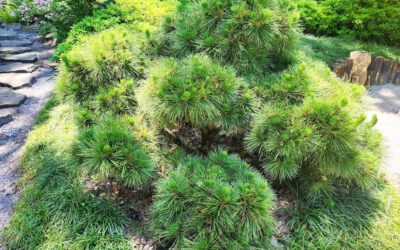Growing Tomatoes

Growing your own tomatoes is not only a rewarding experience once you can pick them, vine ripened, but it’s a flavorful one as well. Here are some helpful ideas and suggestions for getting that juicy fruit as succulent as possible.
Since tomatoes require a long growing season to mature, the best crop begins with healthy transplants. You can start these yourself or purchase them from our greenhouse. Remember, the biggest is not always the best!
The transplant should be dark green in color and the stem straight and sturdy. The roots should also be3 white-tipped but not rootbound.
If the transplants have blooms are fruit already growing, remove them for a stronger plant in the long run.
To avoid transplant shock, the moving of the plant from a warm greenhouse to the harsh realities of the world, the plants should be “hardened off.” This means simply that the plants are exposed to more and more stress each day prior to actual planting. This should be done for a week to 10 days. Place your plants outside in a partially shady location where there is good shelter. Then, each day, move them into a more exposed area until they have spent a full day in the most exposed site. During this time the plants should be kept moist but not wet. If there is any danger of frost during this time, move the plants inside.
If at all possible try to transplant on a cloudy or cool day. This reduces additional stress and can also reduce the plants drying out before the roots can get established.
Thoroughly worked soil will allow the plants to do better and it will be easier to get them in the ground. Be sure to dig the hole deep enough to plant extra deep… up to the second set of leaves. If your transplant is root bound (the roots tightly wound together in a ball) then gently break it up to loosen the roots. This will allow the roots to spread out into the soil instead of continuing in the bound pattern.
Hot Kaps can be placed around the new transplants…this helps protect them from wind and bright sun and also helps protect them from advances of cutworms. Once the plant emerges above the tops of these, protectors, the protector can be removed.
Tomatoes require an even moisture supply – this is especially important due to a condition known as “blossom end rot or curly top” which is caused from frequent wet/dry cycles when the tomato was about the size of a pea. Check the nursery for more information about having
the right kind of soil for fertilizing information.
Pruning and staking of your plants will assist in large fruit staying off the ground where it is likely to rot and will help ensure quality fruit. Although pruning results in some loss of potential tomatoes, it improves the quality of what is left.
To stake a tomato plant, you can drive a 3 – 3 1/2 foot stake into the ground beside the plant and loosely tie the main stem of the plant stake. As the plant grows you can add more ties to ensure that the tomato plant remains erect. Tomato cages are also helpful in keeping the fruit off the ground…just remember that these need to be placed around the plant shortly after they have been transplanted.
When your fruit is ready to harvest, it requires a gentle hand so as not to disturb other fruit not ready to be picked and to avoid bruising. If a tomato has been picked prior to full ripeness it should be stored at room temperatures until ripe. Storing them in the refrigerator all but immediately zaps them of their flavor that you have worked so hard for.
More Posts
November: Scotch Pine Tree
The Scotch Pine (Pinus sylvestris) is a hardy, fast-growing evergreen well-suited for Southern Idaho’s variable climate. Known for its distinctive orange-brown bark and strong, upright form, this...
October: Thunderhead Japanese Black Pine
The Thunderhead Japanese Black Pine (Pinus thunbergii ‘Thunderhead’) is an exceptional choice for Southern Idaho gardens, offering year-round visual interest with its dense, cloud-like growth habit....
September: ‘Sensation’ Box Elder Maple Tree
The Sensation Box Elder Maple (Acer negundo ‘Sensation’) is a unique cultivar of the native North American boxelder, and it has a special connection to Idaho. About 40 years ago, Warren Carnefix, a...



